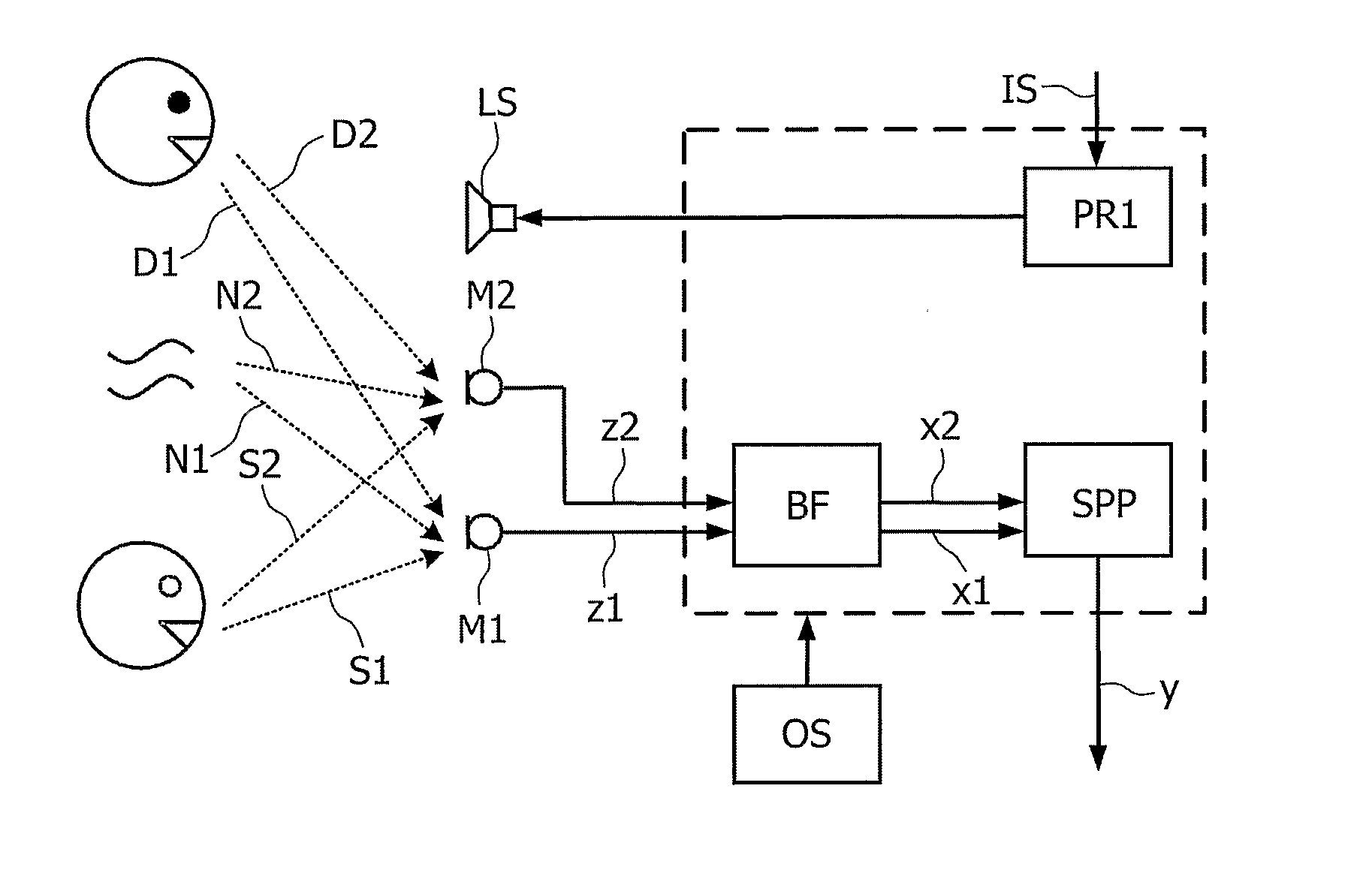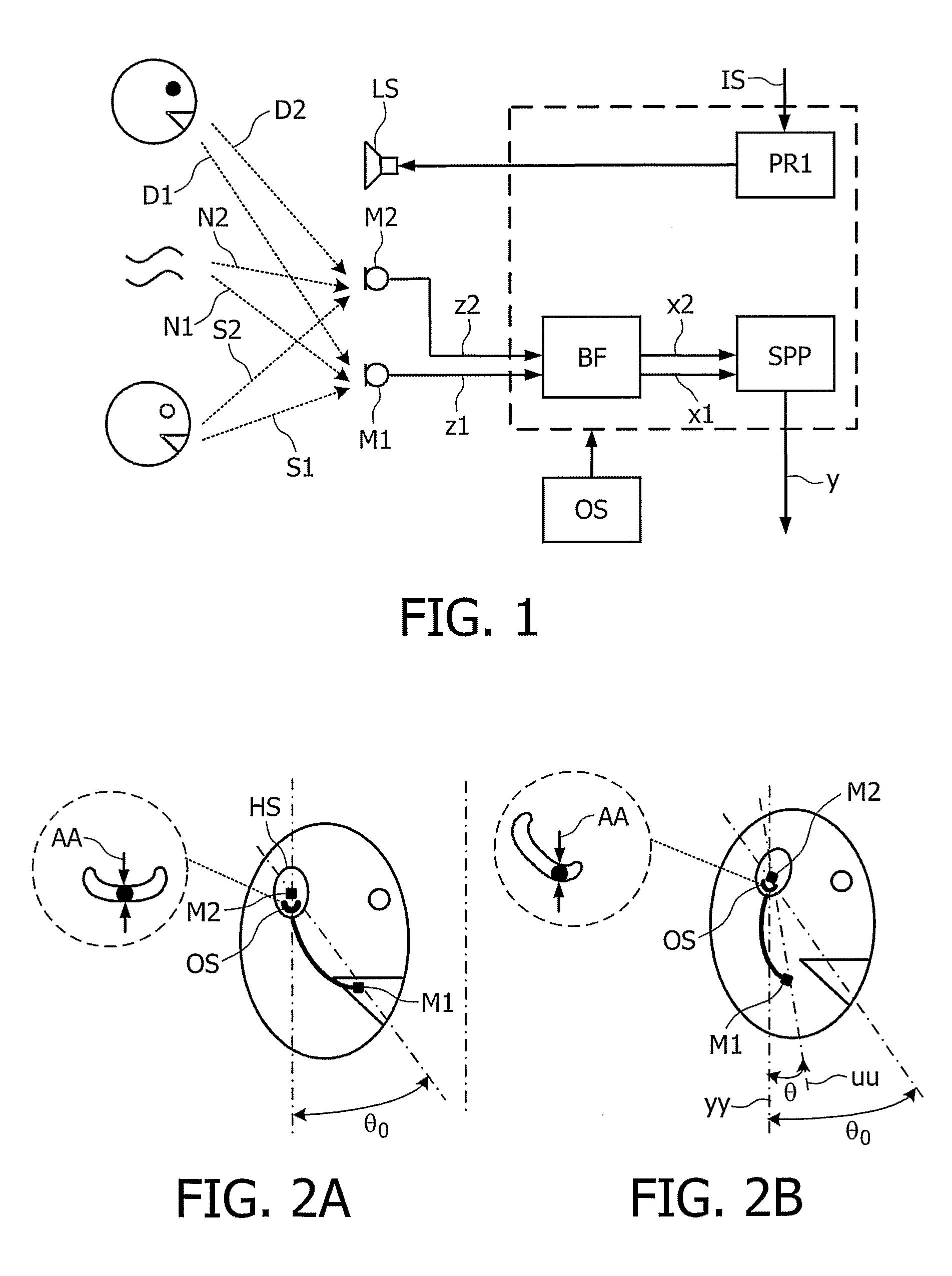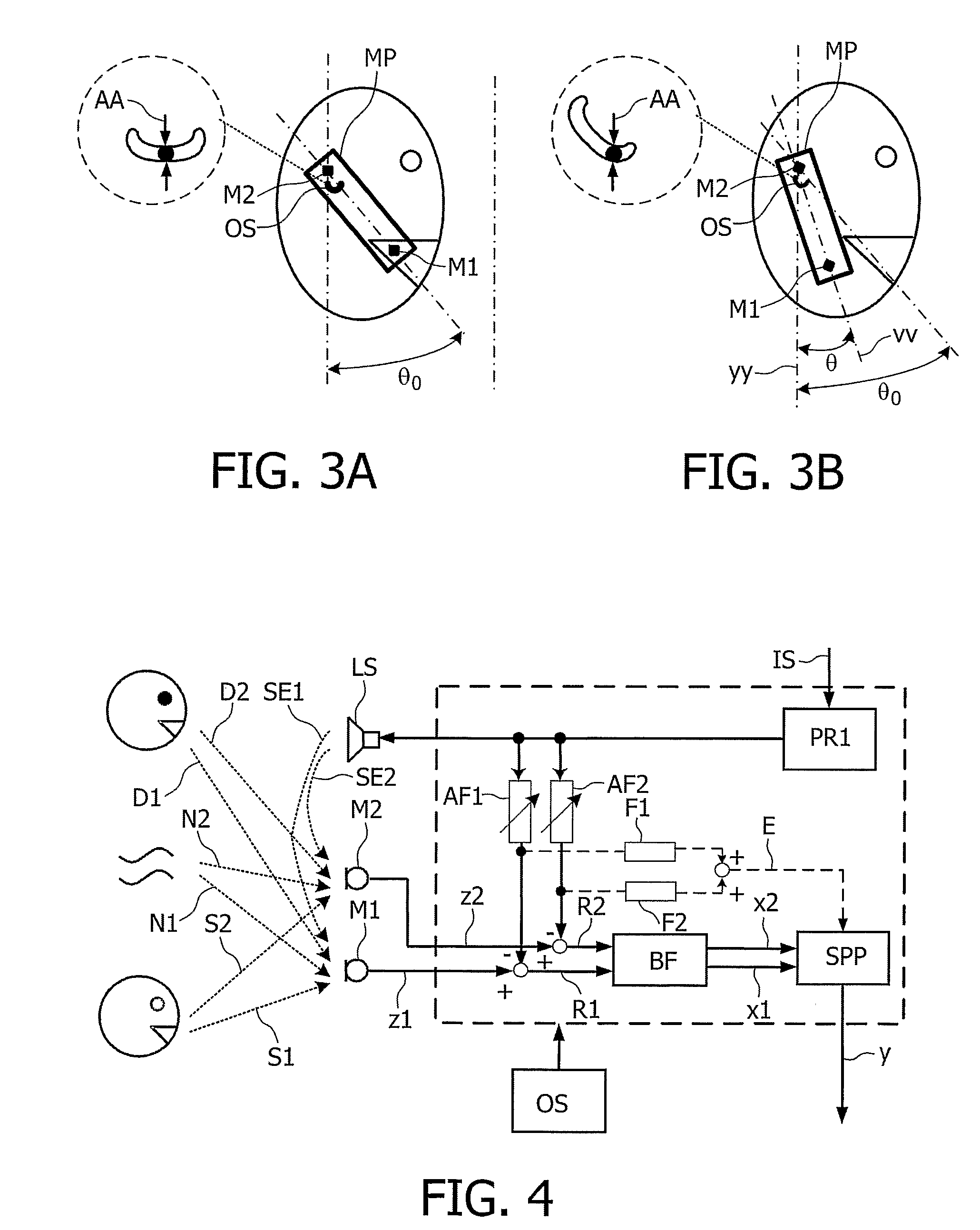Telephony Device with Improved Noise Suppression
a technology of noise suppression and telephone device, applied in the field of telephone device, can solve problems such as inacceptable speech distortion, and achieve the effect of cost-effective and simple implementation
- Summary
- Abstract
- Description
- Claims
- Application Information
AI Technical Summary
Benefits of technology
Problems solved by technology
Method used
Image
Examples
first embodiment
[0051] According to the invention, the audio processing unit comprises means for detecting an in-beam activity. The coefficients of the beam-former adaptive filters are updated when the so-called in-beam activity is detected. This means that the near-end speaker is active and talking in the beam that is made up by the combined system of microphones and adaptive beam-former. An in-beam activity is detected when the following conditions are met:
Pz1>αPz2 (c1)
Px1>βCPx2 (c2)
[0052] where: [0053] Pz1 and Pz2 are the short-term powers of the two respective microphone signals z1 and z2, [0054]α is a positive constant (typically 1.6) and β is another positive constant (typically 2.0), [0055] Px1 and Px2 are the short-term powers of the signals x1 and x2, respectively, and [0056] C is a coherence term. This coherence term is estimated as the short-term full-band power of the stationary noise component N1 in x1 divided by the short-term full-band power of the stationary noise component N2...
second embodiment
[0062] According to the invention, noise suppression is performed gradually, the degree of noise suppression depending on the orientation angle of the telephony device.
[0063] This embodiment is based on the observation according to which the signal-to-noise ratio gradually decreases when the absolute difference between the current angle θ and the optimal angle θ0 gradually increases. With a decreasing signal-to-noise ratio (i.e. below 10 dB where speech distortion would become disturbing), an increasing limitation of the amount of spectral noise suppression is desired in order to prevent unacceptable speech distortion.
[0064] According to this embodiment of the invention, the term Gmin0 of Equation (1) is modified in order to achieve a dependency of the attenuation function as a function of the current angle θ measured by the orientation sensor. The spectral post-processor then calculates the spectral magnitude |Y(f)| of the output signal y as follows: Y(f)=G(f)·X1(f)=max(X1...
PUM
 Login to View More
Login to View More Abstract
Description
Claims
Application Information
 Login to View More
Login to View More - R&D
- Intellectual Property
- Life Sciences
- Materials
- Tech Scout
- Unparalleled Data Quality
- Higher Quality Content
- 60% Fewer Hallucinations
Browse by: Latest US Patents, China's latest patents, Technical Efficacy Thesaurus, Application Domain, Technology Topic, Popular Technical Reports.
© 2025 PatSnap. All rights reserved.Legal|Privacy policy|Modern Slavery Act Transparency Statement|Sitemap|About US| Contact US: help@patsnap.com



